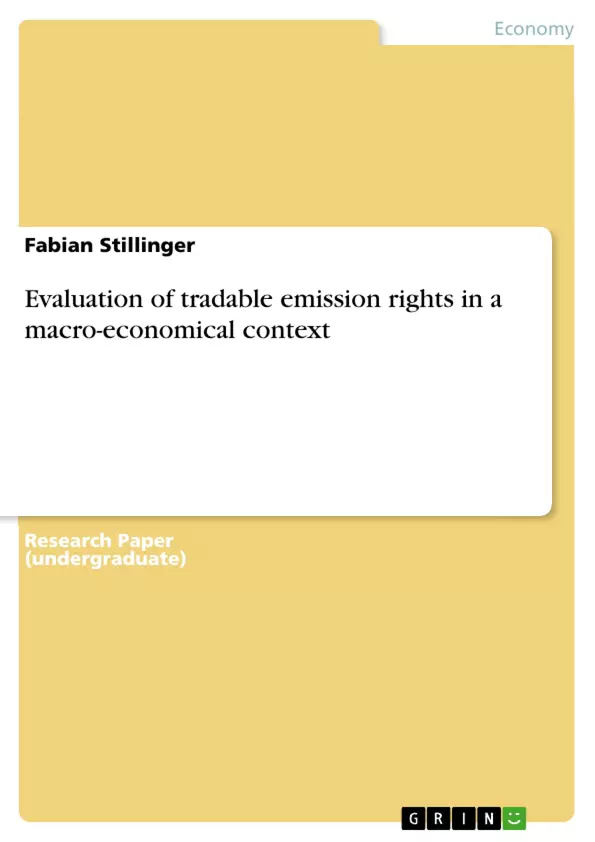"China will not cooperate with the European Union on the ETS, so Chinese airlines will not impose surcharges on customers relating to the emissions tax," Cai Haibo, deputy secretary-general of the China Air Transport Association (CATA), told Reuters news agency (Suharto & Alison, 2012). Europe's cap-and-trade plan, the Emission Trading Scheme (ETS), was launched in 2005 as one of the main pillars of the EU's efforts to battle climate change. It was expanded on January 1, 2012, and includes all airlines using EU airports; one month after the EU's main court rejected a legal challenge brought by US- American carriers (Suharto & Alison, 2012). Being the world’s first international scheme for the trading of greenhouse gas emission allowances, the EU ETS covers some 11,000 power stations and industrial plants. It includes CO2 emissions from installations and factories in 30 countries, and is therefore the world’s biggest trading scheme in this field. The installations currently account for almost half of the EU's CO2 emissions and 40% of its total greenhouse gas emissions, as Nitrous oxides are also covered by the ETS (The European Commission, 2010).
Now, the topic of greenhouse gas emission allowances is more up-to-date than ever, as also non-European firms are held liable by the ETS. Global airlines and air transport organizations criticize the approach of the EU, as they still suffer from the global economic downturn and increasing oil prices (Milmo, 2011); European leaders in contrary see this action as one possibility to tackle the aviation industry’s contribution to climate change in absence of a global agreement (Illmer, 2012).
Inhaltsverzeichnis (Table of Contents)
- Introduction
- External Costs
- Description of the instrument
- Functioning and economic impacts
- Cost Efficiency
- Incentive for Research and Development
- Ecological accuracy
- Conclusion
- List of references
- Appendix
Zielsetzung und Themenschwerpunkte (Objectives and Key Themes)
This assignment examines the evaluation of tradable emission rights (TERs) within a macro-economic context. It analyzes the effectiveness of the European Union's Emission Trading Scheme (ETS), particularly in light of the global aviation industry's response. The assignment delves into the concept of external costs associated with greenhouse gas emissions and explores how TERs can be used to address these costs.
- External costs of greenhouse gas emissions
- Tradable Emission Rights (TERs) and their impact on environmental policy
- Economic efficiency of TERs
- The role of TERs in promoting research and development
- The effectiveness of the EU's Emission Trading Scheme (ETS)
Zusammenfassung der Kapitel (Chapter Summaries)
Chapter 1: Introduction
The introduction sets the stage by discussing the EU's Emissions Trading Scheme (ETS) and its expansion to include airlines. It highlights the global implications of the ETS, particularly in light of opposition from non-European firms and organizations.
Chapter 2: External Costs
This chapter defines external costs, exploring how economic activities can generate negative impacts on third parties without compensation. It specifically focuses on the external costs associated with greenhouse gas emissions, which can lead to climate change and its associated impacts. The chapter also introduces the concept of marginal abatement costs and marginal damage, demonstrating how the optimal level of emissions can be determined.
Chapter 3: Description of the Instrument
This chapter introduces the concept of Tradable Emission Rights (TERs) as a mechanism for addressing external costs. It explains how TERs are allocated and traded, highlighting the role of cap-and-trade programs. The chapter also discusses the functioning of primary and secondary markets for TERs, demonstrating how market forces influence their price.
Schlüsselwörter (Keywords)
This assignment focuses on the key concepts of Tradable Emission Rights (TERs), external costs, greenhouse gas emissions, cap-and-trade programs, economic efficiency, and the EU's Emissions Trading Scheme (ETS). The assignment examines the potential of TERs as an instrument for addressing environmental concerns and fostering technological innovation while promoting economic growth.
- Quote paper
- Fabian Stillinger (Author), 2012, Evaluation of tradable emission rights in a macro-economical context, Munich, GRIN Verlag, https://www.grin.com/document/196569



